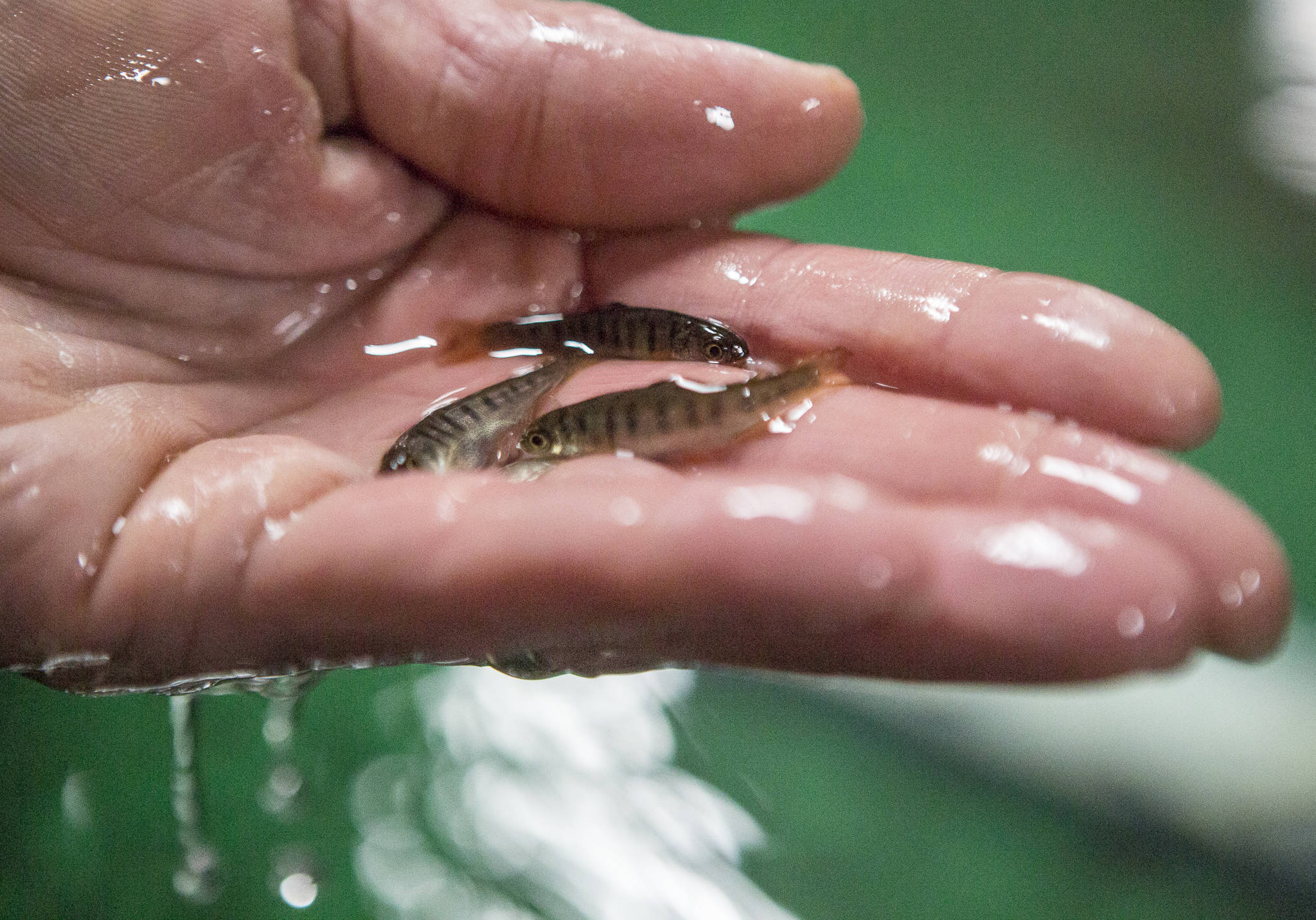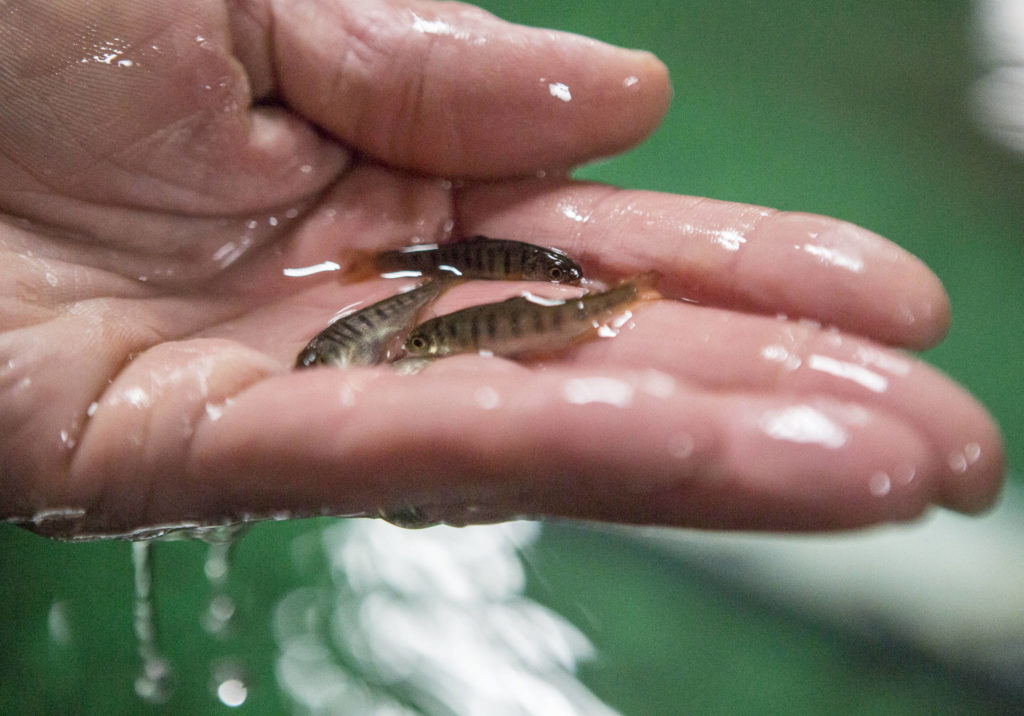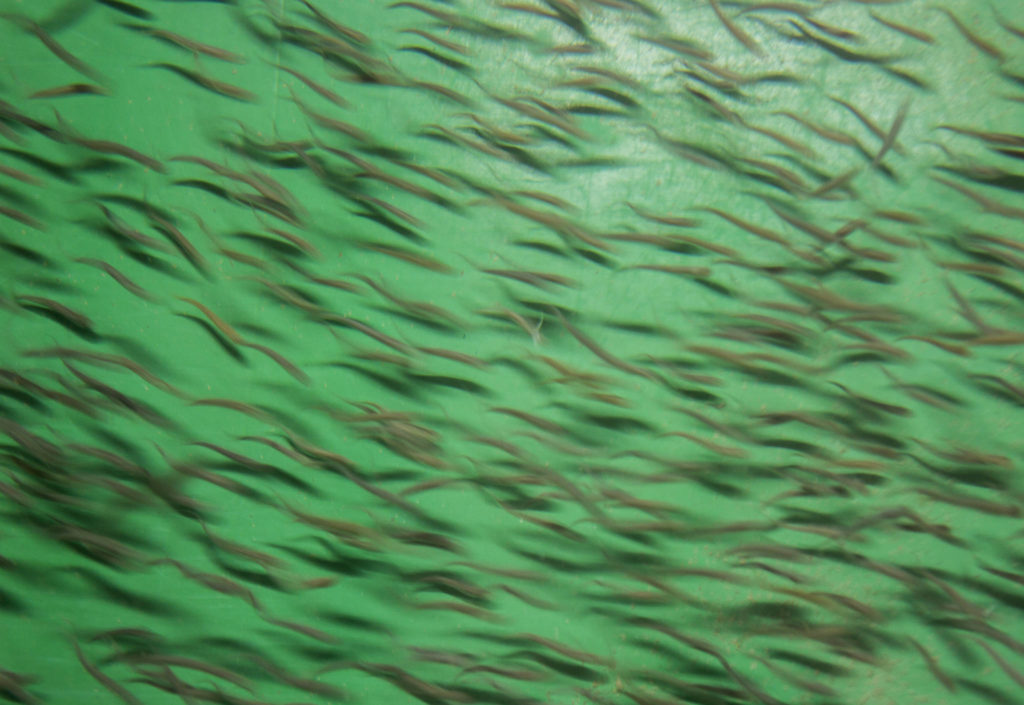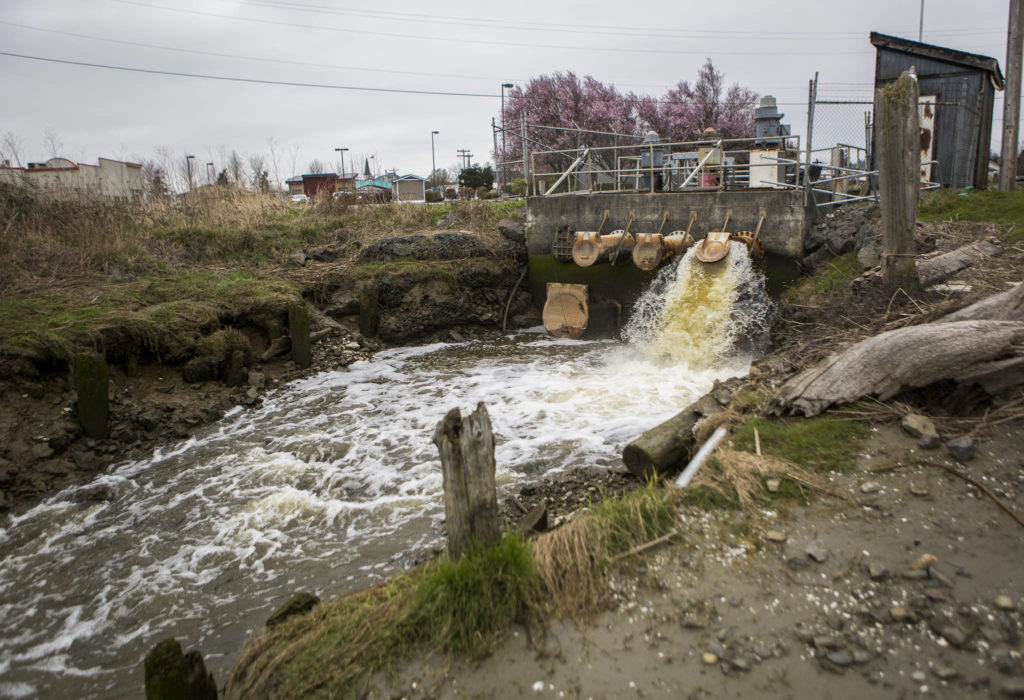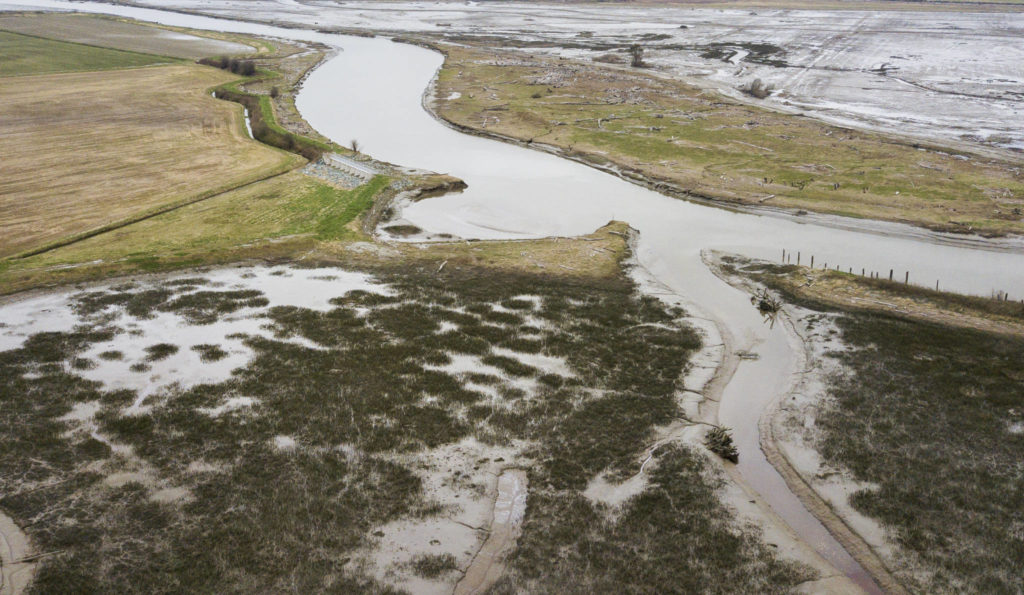STANWOOD — What was a spinach field just four years ago is now a budding tidal marsh known as zis a ba, where sprouting sedges provide the perfect habitat for juvenile salmon to feast on tiny aquatic organisms when the brackish tide pulses.
A five-foot floodgate, built into a levy nearby, is ready to open when storm water surges, allowing remaining farm fields on Florence Island to drain faster.
On the mainland to the east, a corrugated pipe with a four-foot diameter expedites the flow from Stanwood storm drains to Port Susan Bay, preventing downtown from flooding when heavy rains come.
The upgrades are just a few that have been made in recent years as part of a statewide effort to improve floodplains in ways that will benefit farmers, tribes, cities, regional fish and wildlife populations. Coined Floodplains by Design, the program requires collaboration among different groups who’ve historically been at odds about what’s best for the Stillaguamish River Basin and other drainage basins around the state.
For the Stillaguamish Tribe of Indians, the priority has always been to protect the salmon, a cultural hallmark that has long fed its people both physically and spiritually. But the fish’s numbers — particularly of the chinook species — dwindled over the past century as the tidal marshes they relied on were developed for human use.
“Our culture is at risk of being lost,” said Shawn Yanity chairman of the tribe, which ceased commercial salmon fishing in the 1980s. Ceremonial rights now allow tribal anglers to catch about 30 fish a year, Yanity said.
“We need salmon to keep that river alive,” he said.
The tribe and The Nature Conservancy are requesting about $8 million from the state for the set of floodplain projects. By leveraging nearly $7 million more from other funding sources, the plan would restore more fish and wildlife habitat, preserve farmland with easements and further protect private and public property from flooding. Additions to Stanwood’s stormwater management system would also improve water quality in the city, Port Susan and Skagit Bay.
“It’s about the fish, for one,” said Jason Griffith, a fisheries biologist for the Tribe. “But it’s about the people who depend on the fish and the people who depend on the environment being in a better state than it is currently.”
The Tribes’ plan, though, is relatively low on the state’s priority list for funding.
Twenty different sponsoring agencies are seeking a total of almost $87 million in grants from the Floodplains by Design grant program in 2021-2023.
The Stillaguamish watershed projects are ranked 13th, meaning the state would need to allot upwards of $68 million in grants for the Tribes’ projects to get significant funding.
In his budget proposal, Gov. Jay Inslee supported the state Department of Ecology’s recommendation of $70 million total for the program.
State House and Senate proposals are calling for $50.9 million — just enough to cover the eighth ranking on the list, a $8.8 million request from Snohomish County Public Works for similar projects elsewhere in the county, according to grant program lead Scott McKinney.
The Nature Conservancy says state lawmakers could draw from President Joe Biden’s COVID-relief package, which includes $4.25 billion for Washington state government, to fund the full $86 million list. Altogether, those projects would create about 2,600 jobs, said Heather Cole, Puget Sound community relations manager for The Nature Conservancy.
The efforts would also make floodplains and those who depend on them more resilient to future crises, Cole said.
Included in the Tribe’s proposal is research that would help prepare the agricultural community for saltwater intrusion, drought and other impacts anticipated with climate change.
“We’re trying to find solutions that work with nature, not against it,” Cole said.
The Tribes’ plan would also provide funding for the second phase of a restoration effort that has returned more than 150 acres of land to estuary habitat where the south fork of the Stillaguamish River drains into Port Susan Bay. The next stage would involve building additional tidal and river outlets and digging a network of channels to help speed the estuary development on the land, owned by the Nature Conservancy.
The river’s south fork historically supported more than 20,000 chinook salmon annually, said Griffith. Less than 500 fish returned to spawn in 2019, he said.
Some 500 acres of coastal wetlands have been restored in the area. But roughly 2,000 more acres are needed to meet the Stillaguamish Watershed Council’s goal of 80% of historic estuary habitat from the 1870s.
Zis a ba and other restoration sites now serve the same purpose they did then: a brackish buffet where juvenile fish can get their fill of miniature crustaceans under the cover of muddy waters, which protect them from predatory birds.
“It’s wildlife management 101,” Yanity said. “If you don’t have habitat, you can’t have sustainable populations.”
Rachel Riley: 425-339-3465; rriley@heraldnet.com. Twitter: @rachel_m_riley.
Talk to us
> Give us your news tips.
> Send us a letter to the editor.
> More Herald contact information.
